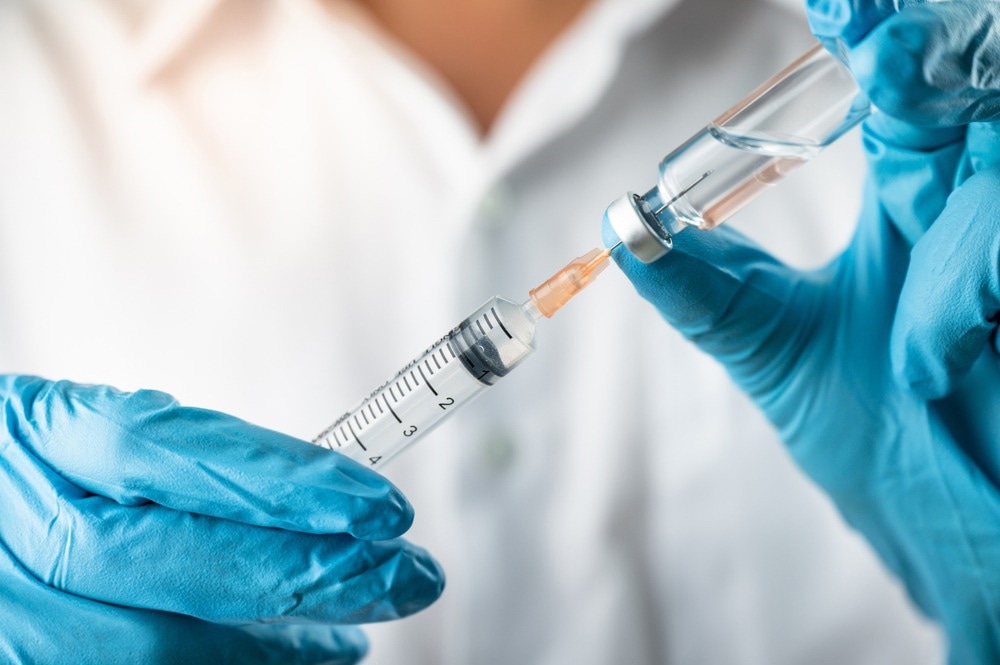In the future, vaccines may be delivered with a puff of air rather than a needle, according to the promising results of new research presented at a meeting of the American Chemistry Society this March. The novel vaccine delivery system, which feels “like you got hit with a Nerf bullet” according to the project’s lead researcher, may offer a less painful way of receiving vaccines.
A Puff of Air Could Deliver Your Next Vaccine | Headline Science
A quarter of adults are frightened of needles
The Centers for Disease Control and Prevention (CDC) estimate that a significant portion of the population has a strong fear of needles, roughly two in three children and one in four adults. Trypanophobia, the fear of needles, greatly contributes to the number of people who skip vaccinations. It is thought that this fear 16% of Americans to pass on getting vaccinated, Harvard Health Publishing believe that as many as 10% of the US population delayed getting their Covid-19 vaccine due to this phobia.
It is vitally important that global health services help as many people as possible access vaccinations. The World Health Organisation (WHO) suggests that each year, 2-3 million deaths are prevented thanks to widespread vaccination programs. In addition, vaccinations have successfully eradicated two diseases: smallpox in 1980, and rinderpest in 2011. Vaccinations play a major role in preventing the spread of numerous diseases that can be fatal, including polio, tetanus, influenza, hepatitis A and B, rubella, Haemophilus influenzae type b, measles, whooping cough, pneumococcal disease, rotavirus, mumps, chickenpox, and diphtheria. By the end of the decade, it is also likely that vaccines will be available to prevent cancer.
In order to protect as many people as possible from these preventable diseases, it is vital to overcome barriers to vaccination. Scientists at the University of Texas at Dallas have developed a revolutionary way to deliver vaccines via a puff of air, rather than an injection, an innovation that may help millions more people access vaccines.
Delivering powdered vaccines through the air
During the COVID-19 pandemic, Jeremiah Gassensmith, PhD, of the University of Texas, bought a compressed gas-powered jet injection system to tinker with, passing the time at home while stay-at-home restrictions were in place. Upon returning to campus, Gassensmith handed the system to graduate student Yalini Wijesundara, telling her “see what you can do with this”.
In the past, jet injection systems have previously been used to insert biological cargo into cells. They had been used by the military but the process has run the risk of spreading infectious disease due to the splash back of fluid they often produced. In veterinary medicine, an evolution of this system can be found as the “gene gun”, where biological cargo is attached to the surface of a microparticle and shot through the skin, to deliver it to the body’s cells. This system, however, cost tens of thousands of dollars.
Gassensmith and her colleagues developed an alternative strategy, they placed the cargo inside a metal-organic framework (MOF) known as zeolitic-imidazolate framework eight (ZIF-8). The cargo, they decided, would be in the form of a powder rather than liquid, eliminating the need to store the vaccine at cold temperatures.
The team used the inspiration of the gene gun to create the novel “MOF-Jet” which they used to deliver “bullets” of ZIF-8 loaded with their powdered vaccine. To test their system, they delivered a ZIF-8 encased gene to onion cells as well as a ZIF-8 encased protein to mice.
Gassensmith also discovered that changing the injector’s carrier gas influenced the speed at which the cargo could be delivered to the cells. Shooting the cargo with carbon dioxide resulted in a fast release, whereas the use of regular air delivered the cargo in several days. The change to alter the time of release opens up a lot of potential applications of the system.

Image Credit: PhotobyTawat/Shutterstock.com
Air-delivered cancer treatment?
The team are now working on developing their system so that it can deliver chemotherapeutics and adjuvants. The hope is that it could be used to potentially treat melanoma. They hypothesize that the MOF-Jet might be able to disperse the therapeutic material over the diseased area more evenly than can be achieved with a needle.
In the future, we may see further applications of the MOF-Jet developed. However, its use as a vaccine delivery system, on its own, is an important development that could benefit vaccination programs across the globe it achieves approval.
Sources:
- Wijesundara, Y.H., Herbert, F.C., Trashi, O., Trashi, I., Brohlin, O.R., Kumari, S., Howlett, T., Benjamin, C.E., Shahrivarkevishahi, A., Diwakara, S.D., Perera, S.D., Cornelius, S.A., Vizuet, J.P., Balkus, K.J., Smaldone, R.A., De Nisco, N.J. and Gassensmith, J.J. (2022). Carrier gas triggered controlled biolistic delivery of DNA and protein therapeutics from metal–organic frameworks. Chemical Science. [online] doi:https://doi.org/10.1039/d2sc04982a.
- Diseases You Almost Forgot About (Thanks to Vaccines) [online]. Centers for Disease Control and Prevention. Available at: https://www.cdc.gov/vaccines/parents/diseases/forgot-14-diseases.html (Accessed March 2023)
- Greenwood, B. (2014) “The contribution of vaccination to Global Health: Past, present and future,” Philosophical Transactions of the Royal Society B: Biological Sciences, 369(1645), p. 20130433. Available at: https://doi.org/10.1098/rstb.2013.0433.
- Ian Sample (2022). Vaccines to treat cancer possible by 2030, say BioNTech founders [online]. The Guardian. Available at: https://www.theguardian.com/society/2022/oct/16/vaccines-to-treat-cancer-possible-by-2030-say-biontech-founders (Accessed March 2023)
- Robert H Shmerling (2021). Terrified of needles? That can affect your health [online]. Harvard Health Publishing. Available at: https://www.health.harvard.edu/blog/terrified-of-needles-that-can-affect-your-health-2021042722470 (Accessed March 2023)